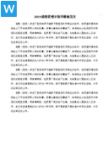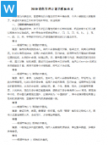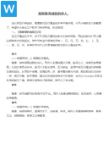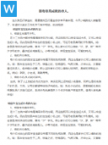






abab的词语
abab" 通常指的是诗歌或韵文中的韵脚模式,其中第一和第三行使用相同的韵脚类型,第二和第四行使用不同的(但通常相关或相似)韵脚类型。这种模式在英文诗歌中非常常见,尤其是在四行诗中。以下是一些示例:1. Blue sky, blue sea, Summer breeze, gentle and free. Sun sets, stars appear, Moon shines, silently near.2. Red roses, white lilies, Love's sweet smell, in their petals. Birds sing, leaves rustle, Nature's song, beautifully.3. Yellow sun, red sunset, Day turns to night, it is set. Green grass, blue sky, Earth's beauty, so high.4. Sweet dreams, gentle sleep, Stars guide the way, in the deep. Silent night, moon's light, Calmness reigns, in the night.5. Snowy mountains, icy cold, Northern lights, in the mold. Frosty winds, ice crystals, Winter's wonder, in every detail.6. Autumn leaves, colors bright, Harvest moon, so light. Cool breeze, crisp air, Season's shift, in the air.请注意,这个模式也可以在其他语言的诗歌中使用,具体取决于那个语言的韵律和音韵结构。此外,不仅仅是四行诗可以使用 "abab" 模式,更长的诗也可能会采用这种模式,只是可能以不同的段落或部分来实现。
下面是一些在不同语言中应用“abab”模式的例子。这些例子使用了各种语言的特性,从字数到音节的计数,再到不同的发音规则。### 中文(汉语):1. **春风** - 春风轻拂,桃红柳绿。 - 鸟语花香,人间四月天。 - 星空闪烁,月挂枝头。 - 蝉鸣鸟叫,夏日之歌。### 西班牙语(西班牙语):2. **Verano** - Verano cálido, sol brillante, Mar azul, arena dorada. - Hojas danzando, viento suave, Sonrisas en la playa.### 法语(法语):3. **Automne** - Automne vêpres, feuilles rouges, Feuilles d'or, dans le vent. - Abeilles dans les champs, oiseaux migrants, Été fait place à l'automne.### 韩语(韩语):4. **봄의 날씨** - 봄의 날씨, 햇살이 따뜻하다, 나무들이 푸르게 물들인다. - 풍경이 빛나는, 사과 나무의 꽃이 만개한다, 새들 목소리가 울린다.### 德语(德语):5. **Sommer** - Sommerstrahlen, golden und warm, Blüten auf den Wiesen, farbenfroh. - Fliegen im Gras, Vögel singen, Freude und Lebensfreude.### 日语(日语):6. **春の風景** - 春の風景、桜色が色づく, 草が青く、風が優しく吹く。 - 鳥の鳴き声、空の色が変わる, 季節の交わりが感じられる。### 意大利语(意大利语):7. **Primavera** - Primavera, fiore che si spiega, Sui prati verde, il sole riscalda. - Uccelli che cantano, il vento soffia, Nella primavera, vita e felicità.这些例子展示了“abab”模式在不同语言中的多样性和灵活性。每种语言都有自己独特的韵律和音乐性,通过这种方式表达相似的主题和情感。
最新句子素材
句子素材排行
- 1 关于环保的美文美段
- 2 充满阳光的句子简短
- 3 保护环境的简短句
- 4 佛经经典名句关于放下
- 5 2020奋斗励志句子
- 6 人生精辟的正能量句子
- 7 特别吸引人的交友宣言
- 8 关于读书的名言警句句子
- 9 中国名人名言100句
- 10 斯大林名言



